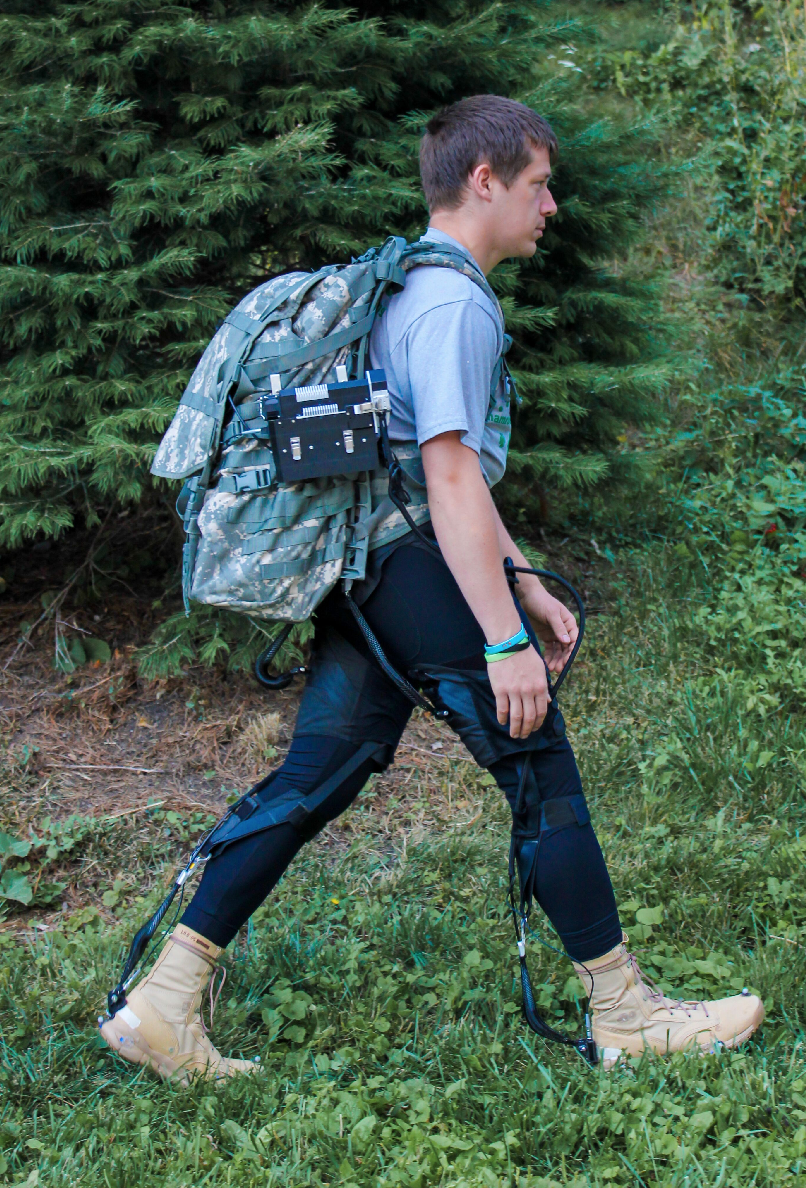Walking is easier with an external muscular system.

Engineers from Harvard University have published a paper where they report on the progress in creating a support system that helps people walk. The system works as an external muscular corset, and can help both people walking with a heavy load (tourists, military), and people with disabilities, or recovering from injury.
Devices that help with walking and running, the inventors have been trying to come up with a very long time. Probably the very first was Nikolai Yagn, who came from a family of Czech Germans who settled in Russia, who invented the “ elastiped ”. Inventors invent devices for walking ( Americans ; Russians ) and for running ( Americans ). A separate class are all kinds of exoskeletons - hard devices that increase the carrying capacity of the person.
Researchers from Harvard went a little different way - their device is trying to emulate the work of the muscles, helping the real muscles, and removing some of the load from them. It consists of a belt, fastenings on the thighs and lower legs. Auxiliary force is created by motors located on the belt, and is transmitted to the foot brackets through metal cables.
')
The creators are working to ensure that the device recognizes human movement and does not interfere with them, but only helps. Its structure includes flexible sensors that transmit information about the movements of a person to the control module.
To develop, engineers applied motion capture technology and studied the gait of a person walking with a backpack, weighing about 30% of his own body weight. Thoroughly studying the work of different muscles while walking, they then set up their system so that it would help in this process.
To determine the effectiveness of the device, scientists tested people in different load modes. All the subjects carried a backpack, but some walked with the device, some carried the device off, and the control group went without a device. It was possible to calculate that the device (which itself weighs about 7 kg) saves 7.3% of energy spent on walking.
Now researchers are working on optimizing the system. One of the unresolved issues, according to Conor Walsh, one of the authors of the paper, is to determine how a person’s muscles and tendons will adapt to external aid.
Source: https://habr.com/ru/post/393931/
All Articles